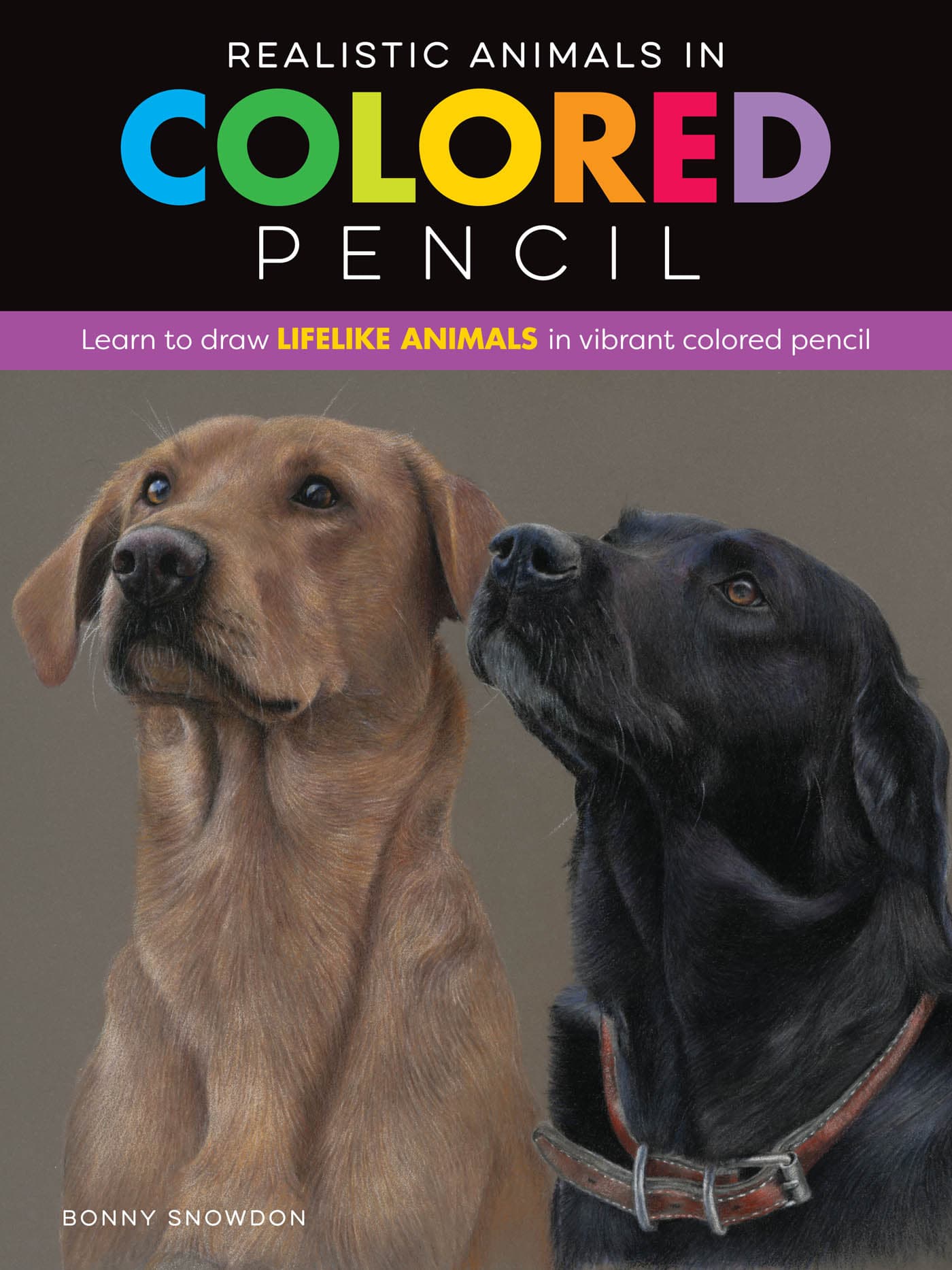PENCILS
Graphite Pencils
I prefer not to use any graphite in my work; graphite might mix with the colored pencil and make things a little muddy. Its also harder to erase outlines done in graphite if youve covered them with colored pencil.
The only time I use graphite is when working on drafting film (). In that case, I use a mechanical pencil to very gently add my outline, and then I make sure to erase the lines before adding colored pencil.
Colored Pencils
This is a book about drawing with colored pencils, so of course they are the most important tool! I am asked all the time which pencil is the best, and to be honest, there is no definitive answer. Even with the same binders (the binder holds the pigment together so that it can be spread on the surface), various brands of pencils feel and react differently. Even pencils within the same brand can have a different feel, depending on which pigments are used.
I choose pencils for the feel they give me on the surface Im using, as well as for the effects I want. For eyes, for example, I use oil-based pencils, as they have a more translucent feel and give me better control over details. I may use a fatter wax-based pencil for large areas of pigment where I just want to lay one solid color down. Its a very personal thing, and for that reason, I always suggest trying different brands to find your favorite. You may opt for just one brand, or you might be like me and mix and match a number of brands to get the effects that you want.
To give you more background on the types of colored pencils, know that there are wax-based and oil-based pencils.
The binder in the core of wax-based pencils is made of wax. These pencils are usually softer and layer and blend well because of their high wax content. They are also generally easier to erase, but multiple layers rendered with a heavy hand can create a problem with wax bloom (see ). This can usually be prevented with a spray of fixative. Because wax-based pencils are softer, they can also be more susceptible to breakage.
Oil-based pencils are created using an oil-based binder. These pencils are usually harder and are great for detail work, but they dont have the same softness or bendability as wax-based pencils. They are also less prone to breakage. There are far more wax-based pencil brands than oil-based pencil brands, and theres some overlap within these two categories. Caran dAche Luminance pencils, for example, contain both oil and wax binders.
Because of the lower wax content, oil-based pencils are less prone to wax bloom. Wax- and oil-based pencils can be combined beautifully, but its often best to use oil-based pencils for base layers and detail work, and save the softer wax-based pencils for the upper layers.
A WORD ABOUT WAX BLOOM
Wax bloom is the white haze that can develop when multiple layers of pencil have been applied with lots of burnishing and blending. If this develops on your artwork, the best way to remove it is to gently wipe a tissue across your artwork, and then follow with an application of workable fixative. You may need to repeat this process a couple of times if the wax bloom returns. Shown here is an example of wax bloom on the left and how it looks after the bloom has been wiped away with a tissue on the right.
PENCIL EXTENDERS
Pencil extenders are ideal for extending the life of your short pencil stubs, and there is a whole range of extenders available in all shapes and sizes. Some are single-ended and some are double-ended. Some have a screw-top that tightens around the pencils as you turn it, and others have a push-up top that squeezes two sides together around the pencils.
ERASERS
Tombow Mono
Another must-have for colored pencil work, especially when using drafting film, is this fabulous little eraser. Its shaped like a pen and it comes in a 2.3mm round size and a larger rectangular size. Refills are available as well. I use this as a tool for adding rather than erasing, so think of it like a white pen that can add soft highlights and texture.
Kneadable Eraser
This is one of my most-used tools. I dont really use it for erasing mistakesmore for adding highlights, softening, and blending.
I use the Faber-Castell kneadable eraser because it is soft and can be kneaded into all sorts of shapes, including very thin and sharp for tiny highlights, as well as blunt for dabbing off excess pigment.
Common Eraser
The common eraser category encompasses all those erasers that are labeled plastic, vinyl, or rubber. These erasers are the least effective at removing colored pencil pigment but can be useful for creating smudges and moving pigment around.












